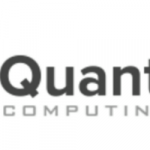FactBasedInsight: Quantum Imaging, Sensing & Timing Outlook 2020: Part One in Series

(FactBasedInsight) Quantum spring is already coming to some parts of the wider quantum sector. National programmes and smart players are taking advantage of the opportunities this brings. Don’t underestimate the future impact of these novel gizmos.
Green shoots
One way to avoid quantum winter is to seek other applications of the same underlying technology that can be brought to market sooner. The single quanta, superposition and entanglement at the heart of quantum computing are famously sensitive to environmental disturbance. It’s easy to see that such technology can also be engineered to offer unique sensitivity in other applications.
This is not new. The SQUID technology used in medical devices today is an early cousin of the superconducting qubits in Google’s Sycamore processor. However, other quantum technology platforms such as trapped atoms and ions, quantum dots, NV diamonds and quantum photonics arguably show even more promise over a wider range of applications. This is reinforced by a vibrant mix of common enabling technologies: micro/nanofabrication, photonics, cryogenics and computational science.
All of this extends economic and commercial possibilities. Countries and regions can target the creation of a wider self-sustaining quantum ecosystem. Companies can plan an extended roadmap of increasingly sophisticated products. Individuals can look forward to a variety of career opportunities. Already focussed deep tech investors such as Quantonation seem to understand this.
Quantum Britannia The UK has the most established example of a national quantum programme seeking to leverage this approach. Focused around four hubs in Computing & Simulation, Communications, Sensing & Metrology and Imaging, since 2014 the UK NQTP has pioneered the systematic development of the UK quantum ecosystem. It has focused research around long-term commercially relevant goals, built technical infrastructure, partnered with industry on demonstrator projects, co-funded accelerated development of commercial prototypes. Equally importantly it has strengthened training, both at the post-graduate and entrepreneur level.
The first UK Quantum Technology Showcase in 2015 had 11 stands and just 300 attendees. The 2019 event had 1000 attendees registered and 82 exhibits, including 50% more startups represented than the previous year [75]. Fact Based Insight found the continuing progress impressive. The displays were also increasingly polished: less lab equipment on display, more prototypes and marketing brochures. There was a strong contribution from quantum computing, but a very significant part of the vibrancy came from other areas closer to market: communications, imaging, sensing, timing and the supporting ecosystem of component suppliers.
Quantum enhanced imaging is an area that has been particularly rapid in reaching market. Three examples point to lessons that Fact Based Insight believes have wider applicability.
1) Horiba is a world leader in high performance instruments and has long been associated with the TCSPC technology used for fluorescence lifetime spectroscopy, an important but difficult to deploy analytic technique in biomedical and material science applications. The QuantICAM developed by QuantIC is an innovative new family of cameras based on a compact array of SPAD detectors, each with their own TCSPC circuitry, on a CMOS substrate. Horiba has now packaged this technology into FLIMERA, a new generation of video cameras for florescence lifetime imaging microscopy. Over an order of magnitude faster than the previous technology, this allows the real-time study of samples such as live cells and fluid biopsy for cancer screening. This is a great example of the new capabilities single photon technology brings, not just increased sensitivity but also increased time resolution and speed of operation. Enabling technologies are allowing these benefits to be delivered in small cost effective packages. It also illustrates how a midsized company can partner successfully with a quantum programme to develop a new generation of product technology that might otherwise have been beyond its reach. Speeding up cancer diagnosis saves lives, reduces health sector costs and is good for business.
2) FluoretiQ is a startup that came out of a fusion of quantum/carbon dot nanotechnology coupled with compact quantum enhanced optics for readout. Its first target segment is rapid detection of bacterial infection in hospitals. Rather than sending a sample away for testing in a lab and getting results days later, the test can be completed in situ taking perhaps 15 minutes. It’s a credit to the quantum programme that it was able to support innovation across what could have been two technology silos, nanotechnology and quantum. The successful strategy has not been to pursue the most sensitive measurement possible, but to create a simplified device that is compact, deployable and faster.
3) QLM is a startup that uses sensitive single-photon infrared detection to allow it to identify methane gas leaks. That these are a bad thing is one of the few things Big Oil and the Greens agree on, so commercial prospects are bright. Single-photons don’t matter for their own sake; but are a new way to make a sensor with a superior sensitivity and size trade-offs. The QLM system is deployable by drone, but engagement with potential industry adopters now points to straight forward fixed installations as being even more lucrative in the short term. Early discussions with potential users almost always bring insight!
Fluoretiq and QLM also illustrate another aspect of the UK approach. Their founders didn’t only benefit from postdoctoral involvement in the NQTP, they also benefited from specific entrepreneurship training as part of the excellent QTEC scheme.
In reality it’s hard to compete initially on cost when comparing to an established product with its long-standing supply chain. Size, speed and deployability are set to be key differentiators for early quantum products.
ColdQuanta – building the quantum value chain
The US would point out that even in the absence of a centralised quantum programme they have been doing stuff like this for years.
CostQuanta is a great example of a company targeting opportunities right along the quantum value chain. A 2007 US academic spinout, its focus is ultra-cold atom systems, a key quantum technology platform enabled by laser cooling and control.
ColdQuanta has built up its product portfolio by leveraging both government contracts and grants, and has secured seed financing of $24m over the last 18 months. It is currently collaborating with NASA/JPL to test a cold atom system currently installed on the ISS. The future roadmap includes secure and stealthy quantum communications, wideband RF sensing for military applications, ultra-precise timing and positioning for navigation, and Rydberg Atom qubits for quantum simulators and quantum computers.
Bo Ewald joined ColdQuanta as CEO in March 2019. Given his long high-tech track record at Cray Research, Silicon Graphics and most recently D-Wave, it is telling that he should choose this strategy as the base for his next challenge. Pointing to the advantages of this new technology he quips “Atoms are great, they are identical and have zero manufacturing defects”. He is also careful to point out to audiences the basic quantum theory – we are wrong to draw a distinction between matter and waves. After previous generations of innovation driven by electronics and then photonics, there is no reason why ‘atomics’ shouldn’t be the next winning solution.
NOTE: See related interview: IQT Interviews Bo Ewald, CEO of ColdQuanta




















